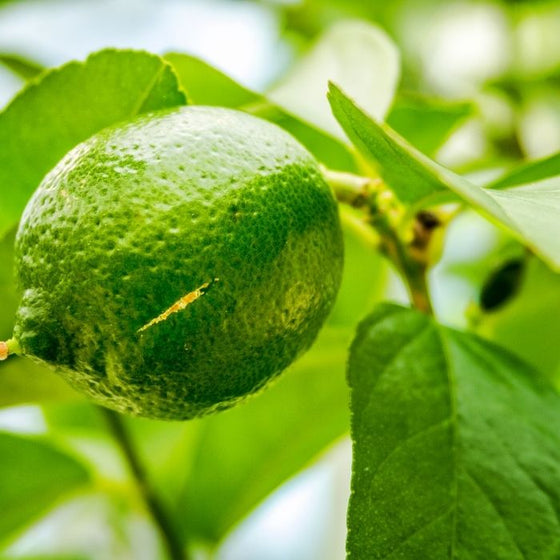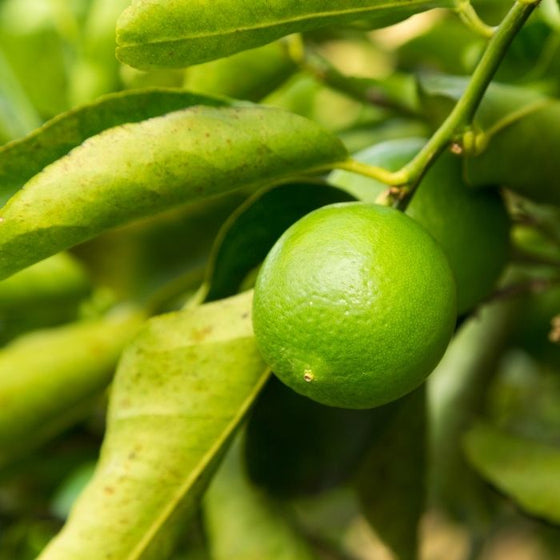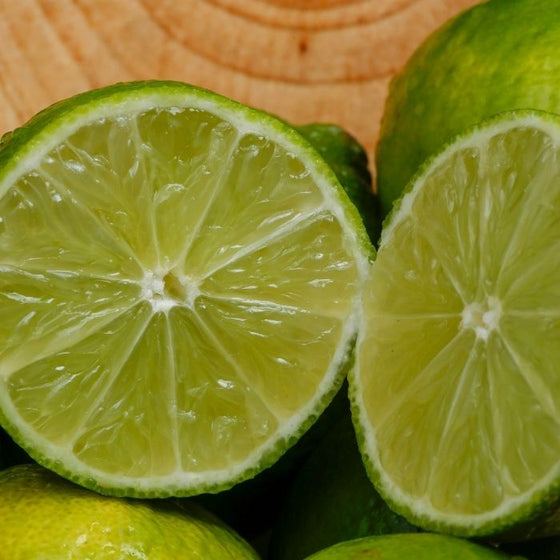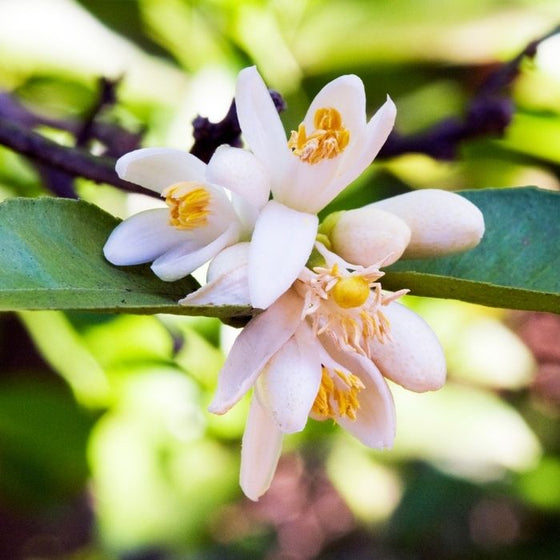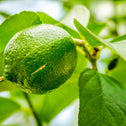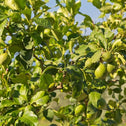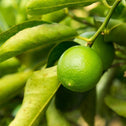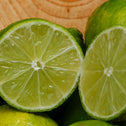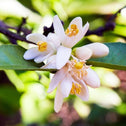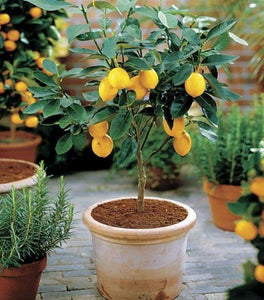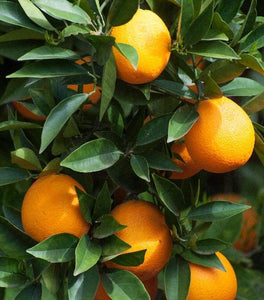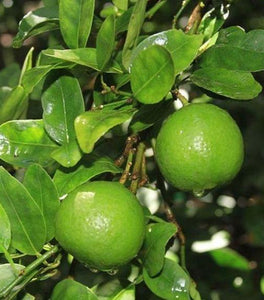Images Depict Mature Plants
Persian Lime Trees for Sale Online
Also known as the Tahiti lime tree, this tree produces the limes most commonly found in grocery stores. The thick-skinned fruit is about the size of a lemon and has a tart flavor that goes great in food and drinks. Unlike lemons, this citrus tree does not have large thorns on its stems, making it more pet friendly as a houseplant.
Although this tree is more cold-hardy than other citrus trees, it thrives in warm temperatures and is heat tolerant, but it can be grown indoors near a sunny window in cooler climates. Be sure to provide your Persian Lime Tree with sufficient water, as this tree’s moisture content is exceptionally high for fruit production. We recommend thoroughly watering this tree at least once a week and allowing it to drain fully.
The Persian Lime Tree is a flowering fruit tree that thrives, producing fruit all year long, although it usually matures in the fall. It is self-pollinating and proves to be relatively easy to grow. The edible and versatile fruit is perfect for many recipes and pairs nicely with our Meyer Lemon Tree.
Read the product information below for more details on properly growing your Persian Lime Tree indoors and outdoors.
NOTE: Does not ship to Arizona (AZ), California (CA), or Texas (TX) due to Phytosanitary rules and regulations.
| Hardiness Zone: | 9-11 |
|---|---|
| Mature Height: | 15 to 20 Feet outdoors; 6 feet in a container |
| Mature Width: | 7 to 10 Feet |
| Sunlight: | Full sun, partial sun |
| Water Requirements: | Allow to dry out between waterings |
| Details: | Deep green fruit, very fragrant, produces authentic Persian limes |
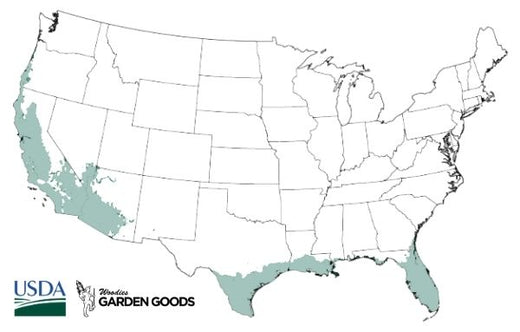
How to Care for Persian Lime Tree
Be sure to read our planting instructions to ensure a healthy and happy plant for years to come!
How do I water Persian Lime Trees?
Develop a watering schedule so the roots maintain even moisture, but are not waterlogged. Water before leaves show wilting, and when roots have reached about 50% dryness. Elevate pots on stones in the saucer to keep them above standing drainage water. A moisture tester can be an excellent tool to help determine when roots are in need of a drink. Consistency is the key with citrus watering. Citrus trees require soil that is moist but never soggy. Watering frequency will vary with soil porosity, tree size, and environmental factors. DO NOT WATER IF THE TOP OF THE SOIL IS DRY WITHOUT CHECKING THE SOIL AT ROOT LEVEL! A wilted tree that perks up within 24 hours after watering indicates the roots got too dry. Adjust the watering schedule accordingly. A tree with yellow or cupped leaves, or leaves that don't look perky AFTER watering can indicate excessive watering and soggy roots. Give your tree water less often. Citrus prefer infrequent, deep waterings. Deeper watering promotes more extensive root growth that strengthens your tree. Generally, once or twice a week deep watering works well for container specimens. Be sure to adjust based on weather conditions! In general, it is probably best to water in the morning, but if plants are dry or wilted it is better to water them right away than wait until morning.
How do I plant Persian Lime Trees in containers?
If you live in a northern area where you must plant your Persian Lime Tree in a container we suggest first that you select the right size pot with adequate drainage holes. A 2-3 year old citrus tree typically wants to grow in about a 12” diameter nursery pot. A large terra cotta pot is ideal because it will allow the roots of the citrus tree to dry out between waterings. This is very important for proper growing of citrus trees. Any pot will do however you will need to be sure the pot will drain well. We suggest putting a layer of stones or gravel approximately 1 to 1.5 inches thick. This will allow for proper drainage and assure the drainage holes in the pot do not become blocked over time. Use a soil mix that is lightweight and drains well. If the mix contains a large proportion of dense, absorbent material, such as peat moss or worm castings, amend with 1/4-1/3 volume of pine bark. This is a good time to add Bio-tone starter fertilizer to the soil and mix thoroughly. Water it thoroughly.
How do I mulch Persian Lime Trees?
if planting in the ground we highly recommend that you mulch your Persian Lime Tree with a ground hardwood mulch or a ground cypress mulch depending on your local availability. Any type of mulch will do, but cypress or hardwood mulch will be of a higher quality and provide better nutrition overall as they break down. Mulching helps to keep weeds away which will compete with your new investment for water and nutrients. A 2 to 3 inch layer of mulch is sufficient, but remember to not to cover any part of the stem of the plant with mulch. It's better to leave a one inch gap of space between the mulch and the stem or trunk of the plant.
How do I fertilize Persian Lime Trees?
If you are a beginner at growing plants, Persian Lime Tree is easy to grow; however, it may be helpful to know that a very small plant which is planted in the ground will take about 1/8 – 1/4 cup of granular, citrus fertilizer. Once the roots have settled, we prefer using slow release fertilizers such as Citrus-Tone by Espoma applied to the soil surface, rather than using plant stakes. This avoids any risk of burning the roots. A very large tree in the ground will take 2 – 3 lbs spread around the drip line of the branches (not next to the trunk). This is a very loose estimate, so please read the directions on the fertilizer before applying it. Never fertilize a plant with a chemical fertilizer if the plant looks sick or wilted. If a plant is struggling due to a disease or root problems, the fertilizer will only add stress to it’s life. Try to cure the problem before adding fertilizer.

